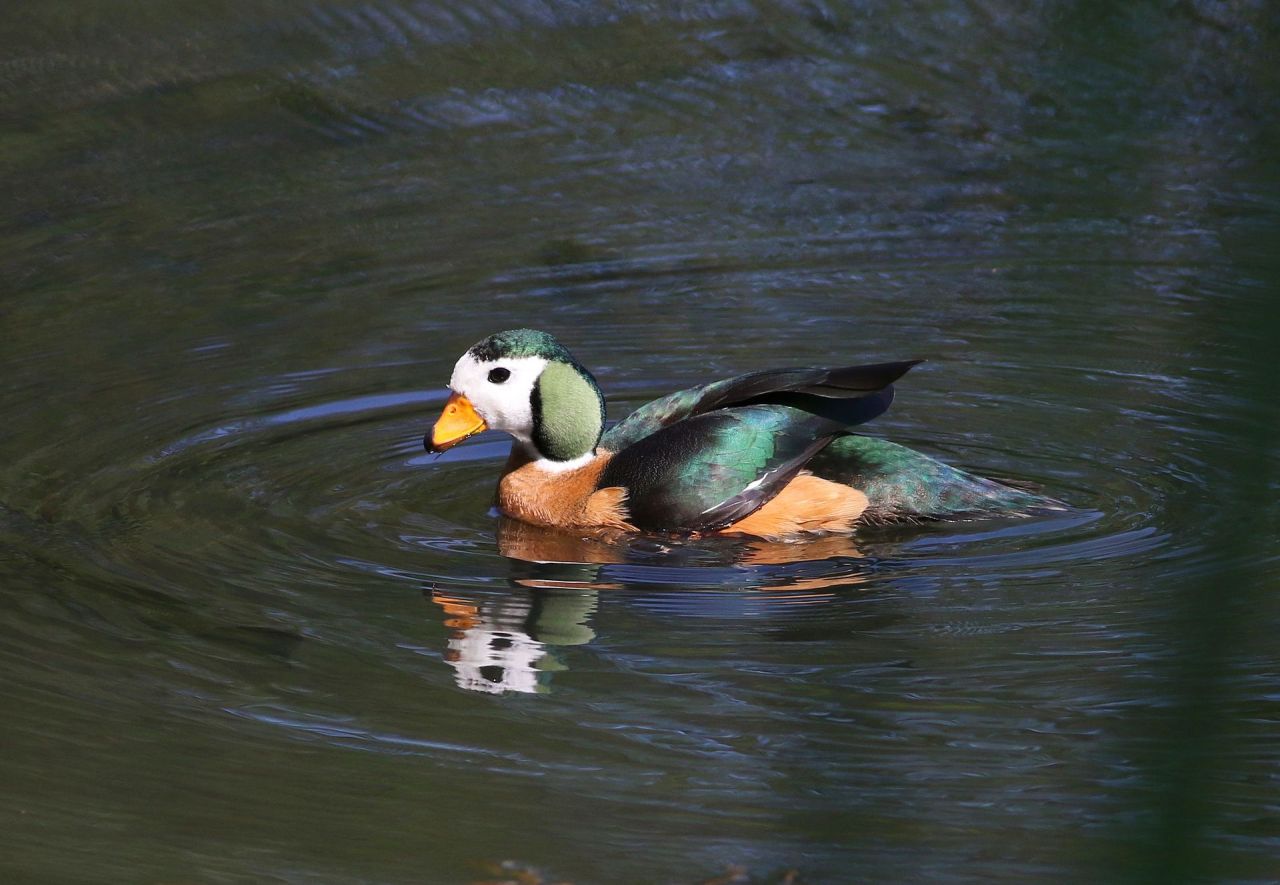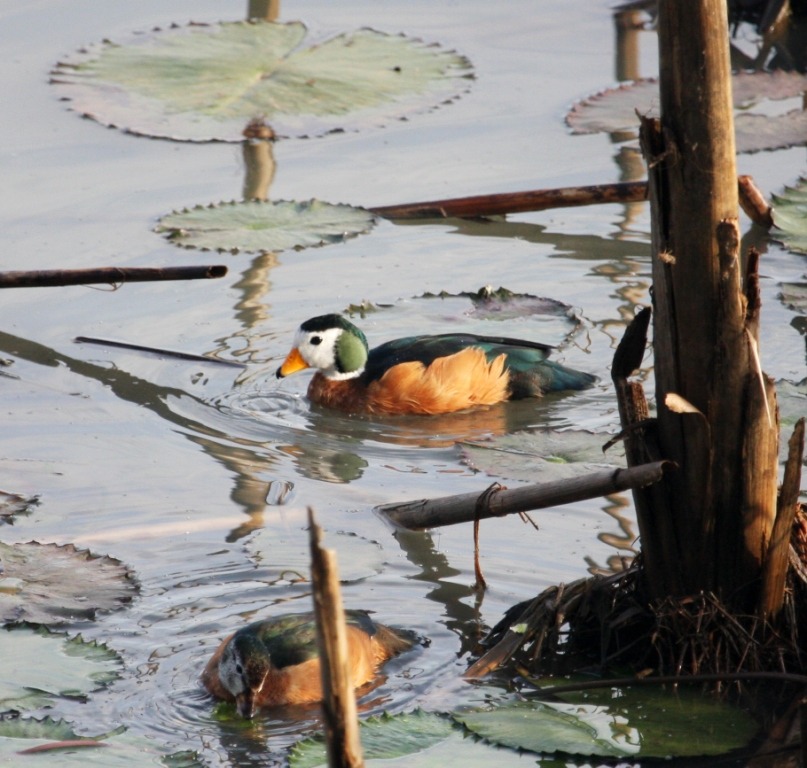Nettapus auritus, N. coromandelianus, N. pulchellus

African Pygmy Goose by Derek Keats, CC BY 2.0
Name: Nettapus auritus, N. coromandelianus, N. pulchellus
Status: Extant
First Described: 1836
Described By: Brandt
Classification: Dinosauria, Saurischia, Eusaurischia, Theropoda, Neotheropoda, Averostra, Tetanurae, Orionides, Avetheropoda, Coelurosauria, Tyrannoraptora, Maniraptoriformes, Maniraptora, Pennaraptora, Paraves, Eumaniraptora, Averaptora, Avialae, Euavialae, Avebrevicauda, Pygostylia, Ornithothoraces, Euornithes, Ornithuromorpha, Ornithurae, Neornithes, Neognathae, Galloanserae, Anseriformes, Anseres, Anatoidea, Anatidae
Today we have a series of very special geese - the Pygmy Geese! We have the African Pygmy Goose, Nettapus auritus, the Cotton Pygmy Goose, N. coromandelianus, and the Green Pygmy Goose, N. pulchellus. Nettapus does have two fossil species, N. eyrensis and an undescribed specimen, known from the Lower Cooper River fossil location in South Australia, dating to about 100,000 years ago from the Tarantian of the Pleistocene, and Jalisco in Mexico from about 5 million years ago, in the Zanclean of the Pliocene, making it a recently appeared bird all things considered. They are the smallest known fowl genus, meaning, smaller than any other duck or chicken. They have short bills, round heads, and short legs, making them absolutely adorable, and they nest in tree holes, which just increases the adorable quotient. Luckily, none of these birds are threatened with extinction at this time.

African Pygmy Goose by Veli Pohjonen, in the Public Domain
The African Pygmy Goose is the one species of this group known from Africa, specifically sub-Saharan Africa. It weighs between about 285 and 260 grams, with very small wingspans and short bills extending to the forehead, leading to them being called geese. The males have white faces with black eye patches, and iridescent black crowns that look green in the light going down the back of the neck, with green patches of feathers around the ears. The females, meanwhile, have grey faces, with smudges of brown patches. Both look essentially similar for their bodies, with black-iridescent-green feathers running down the back and brown feathers underneath. Ducklings have white feathers with similar grey and brown patterns as the adult females, though their bodies are white and black and speckled grey. This is a nomadic bird species, moving all over Sub-Saharan Africa and Madagascar, looking for slow flowing and stagnant water with water lilies in inland areas to live. They feed primarily on water lilies, as well as floating seeds and small invertebrates. They have strong pair bounds that last over several seasons, and their breeding is actually triggered by the presence of rain!

Cotton Pygmy Goose by Mprasannak, CC BY-SA 4.0
The other two species in this genus hail from Australia and Asia; with the Cotton Pygmy Goose found in Pakistan, India, Bangladesh, Southeast Asia and Australia. They are very small, even smaller than the African Pygmy Goose, weighing as little as 160 grams. They have short, deep bills and rounded white heads with brown plumage at the top. They are mostly white, with males having greenish plumage during the mating season, and the wings being green with white bands. They feet on vegetation, and nest in hollows, producing nests of 6 to 12 eggs at a time.

Green Pygmy Goose by Summerdrought, CC B-SA 4.0
Finally, the Green Pygmy Goose is known primarily from New Guinea and North Australia, and is in between the African Pygmy Goose and the Cotton Pygmy Goose in size. It has a small grey-ish bill, with dark green feathers over their neck and back, as well as black feathers for the wings and speckled brown and white and black feathers for the bodies. The females aren’t green, but have barred necks, but that is the only real difference there. The males have high0pitched whistles that are returned by lower-pitched calls by the females. They nest in tree hollows and live in vegetated lagoons, feeding primarily on vegetation.
Sources:
Boles, W. E. 2010. A Revision of C. W. De Vis’ Fossil Cormorants (Aves: Phalacrocoracidae). Records of the Australian Museum 62:145-155
https://en.wikipedia.org/wiki/Pygmy_goose
https://en.wikipedia.org/wiki/African_pygmy_goose













